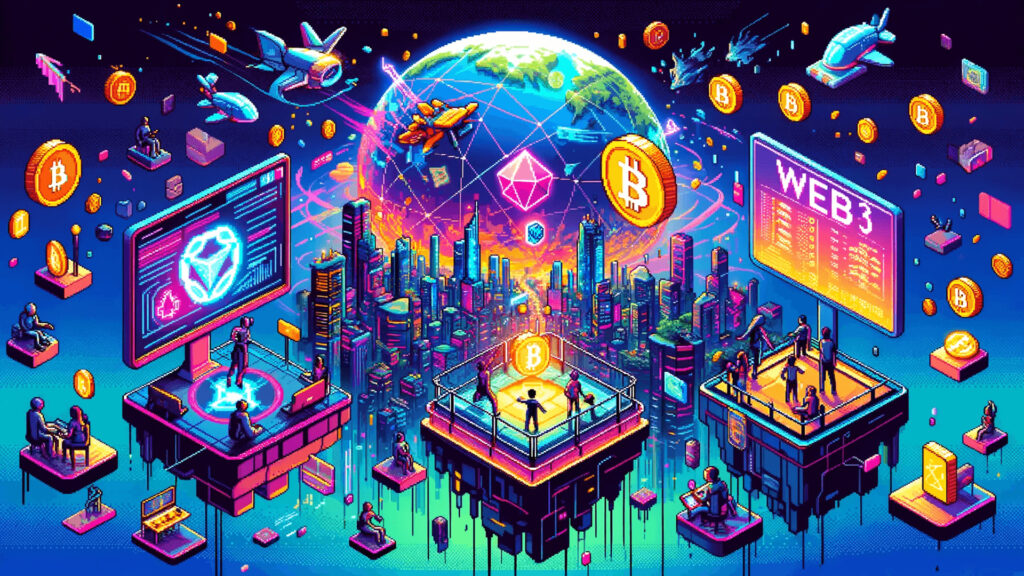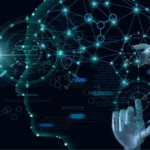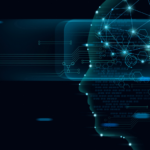
The Evolution from Web2 to Web3
The internet is undergoing a fundamental shift. In the Web2 era, users interact with platforms owned by corporations that control and profit from user data. However, Web3, often referred to as the decentralized web, is emerging as a transformative solution that seeks to return control of digital assets, data, and identity back to users. But what exactly is Web3, and how will it reshape digital ownership? In this post, we’ll break down the core principles of Web3 and why it matters for the future of the internet.
What is Web3?
Web3 represents the next generation of the internet, built on blockchain technology and decentralized protocols. Unlike Web2, which is controlled by centralized entities like Google, Facebook, or Amazon, Web3 allows users to interact in a peer-to-peer manner, reducing reliance on middlemen and offering enhanced privacy and autonomy.
Key Web3 concepts include:
- Decentralization: No single entity controls the system. Instead, it’s powered by a distributed network of nodes that validate transactions.
- Blockchain: The underlying technology that records transactions in an immutable ledger, ensuring transparency and security.
- Smart Contracts: Self-executing contracts with the terms directly written into code, enabling automated, trustless transactions between parties.
Digital Ownership in the Web3 Era
In Web2, digital assets like social media profiles, in-game items, or even digital art are owned and controlled by platforms. For example, even though you upload content on Instagram, the platform retains control over how it’s used and monetized. With Web3, the concept of true digital ownership emerges, empowering users to have verifiable control over their assets through blockchain technology.
- Non-Fungible Tokens (NFTs): One of the major drivers of digital ownership in Web3 is NFTs. These unique digital assets, stored on the blockchain, allow users to own art, music, virtual real estate, and more. Artists and creators can tokenize their work, selling it directly to their audience without intermediaries, and even earning royalties through smart contracts.
- Self-sovereign Identity: Web3 introduces the concept of self-sovereign identity, where users can control their own digital identity without needing to rely on centralized services. This not only ensures privacy but also allows for easier transfer of identity across platforms.
Impacts on Creators and Consumers
For content creators, Web3 opens up new ways to monetize their work. Creators can directly sell digital assets like music, videos, or art via decentralized platforms, reducing reliance on middlemen like record labels or streaming services. They can also receive ongoing payments through smart contracts that ensure transparency and fairness.
For consumers, this decentralization means they can purchase, trade, and use digital goods without worrying about being locked into a particular platform. Ownership is verifiable on the blockchain, and assets can move freely across ecosystems.
Web3’s Role in Decentralized Finance (DeFi)
Another critical development in Web3 is Decentralized Finance (DeFi), which is reshaping how we think about investments, banking, and ownership of financial assets. DeFi platforms allow users to lend, borrow, trade, and earn interest on cryptocurrencies without relying on traditional financial institutions. This eliminates intermediaries, reduces fees, and provides access to financial services for people who may not have had access before.
Challenges in Web3 Adoption
While Web3 has immense potential, it’s not without challenges. Some of the key hurdles include:
- Scalability: Current blockchain networks, like Ethereum, face scalability issues, making it difficult to handle a large number of transactions quickly.
- User Experience: For mass adoption to occur, Web3 must become as user-friendly as Web2. Currently, interacting with decentralized apps (dApps) can be complex for the average user.
- Regulation: Governments are still grappling with how to regulate decentralized platforms, digital assets, and cryptocurrencies, which adds a layer of uncertainty to the future of Web3.
- Security: Decentralized platforms, while secure in principle, can still be vulnerable to hacks and exploits, which could undermine trust in Web3 systems.
Future Directions of Web3
The future of Web3 is promising but still evolving. Innovations like layer 2 scaling solutions, which improve transaction speeds and lower fees, and the rise of interoperability protocols, which enable assets to move seamlessly between blockchains, are key to making Web3 more accessible and scalable.
Additionally, as more mainstream companies explore Web3 applications, such as digital collectibles and virtual worlds (the Metaverse), the ecosystem will likely continue to expand. However, the future of Web3 will largely depend on how the industry addresses scalability, regulation, and user experience challenges.
Empowering Users in the Digital Age
Web3 is more than just a technological shift—it’s a movement toward a more equitable, user-controlled digital ecosystem. By decentralizing ownership and control, Web3 has the potential to reshape industries ranging from finance to entertainment, giving individuals unprecedented control over their digital lives.
Understanding the core concepts of Web3, from blockchain to NFTs, is critical for navigating this new frontier of digital ownership. While there are challenges to overcome, the potential benefits of a more transparent, decentralized internet make Web3 a game-changer for the future of digital interactions.




